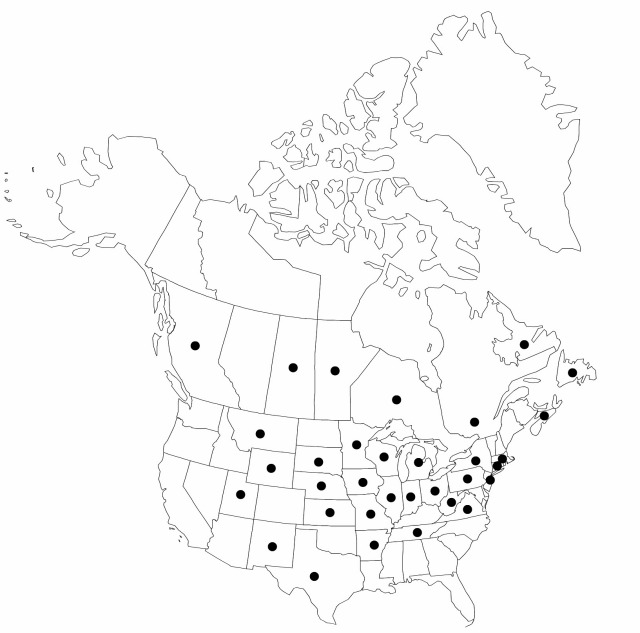Carex hystericina
Sp. Pl. 4(1): 282. 1805.
Plants densely to loosely cespitose; rhizomes short, no more than 10 cm. Culms trigonous in cross-section, 20–100 cm, scabrous-angled distally. Leaves: basal sheaths usually strongly tinged with reddish purple; ligules longer than wide; blades pale to mid green, flat to W-shaped, 2.5–8.5 mm wide, glabrous. Inflorescences 2.5–12 (–20) cm; proximal bract 4–30 cm, exceeding inflorescence; proximal (1–) 2–3 (–4) spikes pistillate, erect or often the proximal pendent; terminal 1 spike staminate. Pistillate scales lanceolate, 2.3–6.5 × 0.5–1.1 mm, shorter than perigynia, margins ciliate,, apex truncate to retuse, scabrous-awned, awn longer than body. Staminate scales scabrous-awned, sometimes also ciliate-margined. Perigynia spreading or the proximal reflexed, strongly 13–21-veined, veins mostly separated by 3+ times their width, confluent at or proximal to mid beak (except for 2 prominent lateral), elliptic, 4.5–7.3 × 1.4–2.1 mm, herbaceous, apex contracted; beak 1.9–2.8 mm, smooth, bidentulate, teeth straight, 0.3–0.9 mm. Stigmas 3. Achenes pale-brown, trigonous, smooth.
Phenology: Fruiting May–Jul.
Habitat: Open swamps, sedge meadows, fens, stream, pond, and lakeshores, seeps, springheads, ditches, mostly in calcareous soils
Elevation: 0–2000 m
Distribution

B.C., Man., Nfld. and Labr., N.S., Ont., Que., Sask., Ark., Conn., Ill., Ind., Iowa, Kans., Mass., Mich., Minn., Mo., Mont., Nebr., N.J., N.Mex., N.Y., Ohio, Pa., S.Dak., Tenn., Tex., Utah, Va., W.Va., Wis., Wyo.
Discussion
Carex hystericina is widespread and common, even weedy, in regions with calcareous substrates. It hybridizes uncommonly with C. pseudocyperus and more rarely with C. comosa, C. schweinitzii, C. utriculata, and C. vesicaria. Hybrids are sterile and intermediate in morphology. The species epithet is often, but not originally, spelled “hystricina.”
Selected References
None.
Lower Taxa
"shortened" is not a number.
